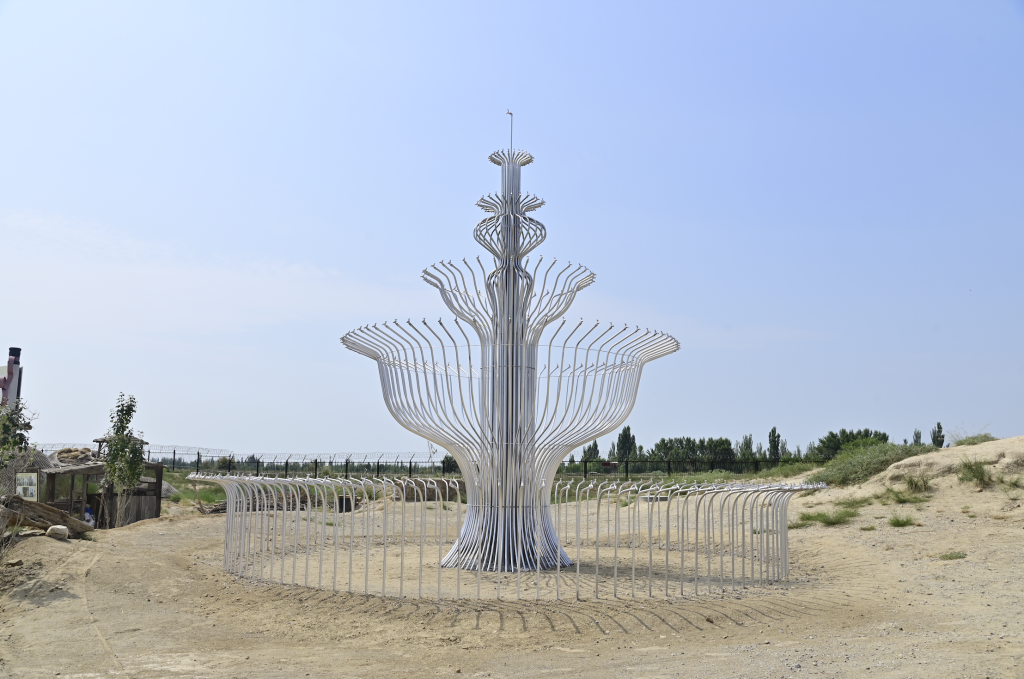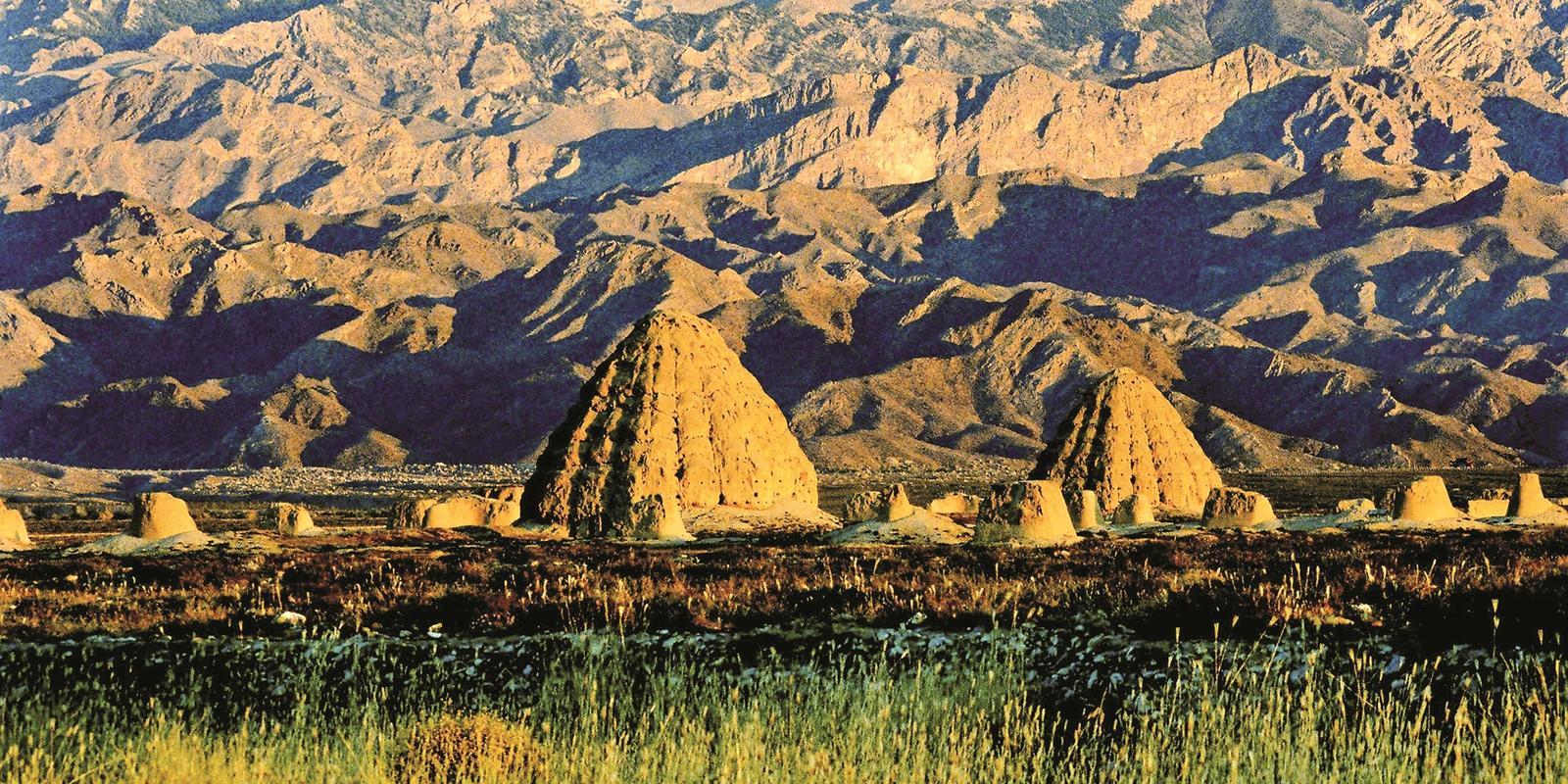
The Helan Mountains are an important natural geographical boundary in China and an important ecological security barrier in the northwest. As a cultural symbol, it also has multiple symbols in the history of literature and art. It is the battlefield memory of the frontier war, the collision zone of nomadic and agricultural civilizations, and the "mountain soul" projected by the lonely spirit. Recently, the "Helan Mountain-2025 Yinchuan Xixia District Earth Art Festival and Zhenbeibao Western Film City Public Art Season" kicked off. It is worth mentioning that the exhibition site is a film and television city with ancient and desolate characteristics founded by the late contemporary writer Zhang Xianliang in 1993. The original site was a frontier castle in the Ming and Qing Dynasties.

Exhibition View
The Helan Mountains described by writers are a place where multiple civilizations converge, where herdsmen's yurts sway in the wind, and farmers' rice sparkles in the sun. It is a desolate and magnificent picture, as well as a silent dialogue.
This exhibition mainly presents the works of this public art season through three art sections. The first part is "Saibei·Renewal", which uses art as a medium to introduce public art masters and masterpieces to the local area for local creation; the second part, "Saibei·Imprint", takes the historical context of Helan Mountain as a clue, selects representative chapters from cultural classics for visual creation and presentation, so that the audience traveling in the landscape can think about tradition in the present, recall the past and cherish the present; the third part focuses on "Saibei·Legend", which takes the literary works of writer Zhang Xianliang and the classic movies shot at the exhibition site as prototypes, and uses the creative method of integrating artistic creation with classics. The classic characters and fragments once again flow into the memories of on-site visitors.

"Wenlan on the Frontier"
It is worth mentioning that the exhibition site is the Western Film Studio in Zhenbeibao, Xixia District. This film studio was founded by contemporary Chinese writer Mr. Zhang Xianliang in 1993. The original site was a frontier castle in the Ming and Qing Dynasties. It is simple, primitive, rough, desolate and folk. It retains the shooting scenes of more than 100 film and television works, such as "Red Sorghum" adapted from Mo Yan's work, "The Shepherd" reflecting the romantic love story during the "Cultural Revolution", and "A Chinese Odyssey", a classic work in the 21st century and the love enlightenment of many fans.
In multiple venues of the Ming City and Qing City castles, 20 large-scale art works created and planned by the Chinese Art Creation Mathematical Film and Character Center of Sichuan Fine Arts Institute complement the ancient Qing City castles, forming a dreamy beauty that interweaves the ancient and modern.
The largest work of the public art season is called "Phoenix Dances in Helan Mountain". This work fits the name of Yinchuan City, "Phoenix City". It is 13.14 meters high and 26 meters long. The steel frame structure has smooth lines and the feathers are all carved from colored wooden boards.

Phoenix Dances over Helan Mountain
Here, you may come across a group of Xixia characters cast in bronze. When your fingertips brush over the concave and convex patterns, you may seem to hear the camel bells from thousands of years ago. This is the art work "Overlapping Shadows of City Walls"; a group of pottery pieces that match the environment hang in the air with a ding-dong sound, depicting the shape of the wind...

"Overlapping Shadows of the City"

"The Wind Trace Study on Acoustics"
"The Style of Existence", "The Shadow Club: Travels along the Silk Road", "Deep in the White Clouds"... make the stories and figures that have disappeared in time come alive again.

Pang Maokun: Styles of Existence

Jiao Xingtao: Shadow Club: Traveling the Silk Road
In the dynamically projected "Records of the Helan Mountains", the mountains, rivers, and plants "grow" in the light and shadow, turning the text in the classics into a perceptible scene; in "Sunning in the Autumn: Red Courtyard", in the courtyard where "Red Sorghum" was filmed, the rich red and the texture of the loess form a warm collision; the huge "Golden Hoop Theater" in the Qing Castle is based on the classic IP of the cinema and uses art to reproduce the "legend" of "A Chinese Odyssey": the sculpture of "Northwest Man" written by Zhang Xianliang is vivid...

"Autumn Sunshine: Red Courtyard"

Golden Hoop Theater
"Each work in the exhibition brings together the contributions of many artists and creative teams from the Digital Imaging Center of Chinese Art Creation of Sichuan Fine Arts Institute in Chongqing. It was finally created after more than a year of research." A relevant person in charge of Sichuan Fine Arts Institute said, "There are many works of art that the audience can participate in and interact with. We look forward to everyone visiting the site, checking in, and creating 20 large-scale public art works on site with the artists."
It is reported that this exhibition is hosted by Zhenbeibao Western Film City, created by the Digital Image Center of Chinese Art Creation of Sichuan Fine Arts Institute, and supported by the Xixia District Culture, Tourism, Sports, Radio, and Television Bureau of Yinchuan City. The exhibition will be held from July 18 to October 18. At the closing of the public art season, the "Phoenix Dances in Helan Mountain" will be lit, which means the rebirth of the phoenix after nirvana, in order to wish Yinchuan a new look and a beautiful life.
Pang Maokun, vice chairman of the China Artists Association and chairman of the Chongqing Artists Association, said, "This public art season is based on the historical context of the Helan Mountains. When art is embedded in the mountains and rivers, history becomes warm; when creativity is integrated into life, the city becomes full of vitality."

on site
